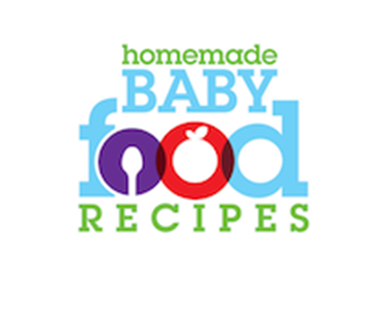Your Baby And Vitamin D
This page is designed to answer questions about your baby and vitamin D, a subject which often causes confusion for parents.
PLEASE NOTE: The information given here is meant as a guide only and does not replace professional medical advice.
Always discuss your baby’s nutritional needs (including possible vitamin supplementation) with your doctor.
How does my baby’s body use vitamin D?
Vitamin D helps your baby’s body absorb calcium, which it needs to develop strong bones and teeth.
A deficiency of vitamin D can cause rickets, which affects the way bones develop and grow.
The bones of a child with rickets are unable to sufficiently support his body weight, resulting in bowed legs.
How can I ensure my baby is getting enough vitamin D?
The answer to this question can vary quite a bit from one culture/country to another, so you might come across lots of conflicting advice.
SOURCES OF VITAMIN D
The most important source of vitamin D is not food… it’s sunlight!
In fact, vitamin D isn’t actually a vitamin at all, but is a steroid hormone that the body produces using UVB rays from the sun.
Vitamin D deficiencies in babies can arise if babies don't receive enough sun exposure.
Other risk factors for vitamin D deficiency in babies include:
- darker pigmented skin
- premature birth
- vitamin D deficiency in a breastfeeding mother
- lead exposure
- offering babies low-calcium foods in place of breast milk
SAFELY EXPOSING YOUR BABY TO THE SUN
We are all used to protecting our babies from the sun.
AAP guidelines say that you shouldn't expose babies under 6 months of age to the sun at all, and that you should fully protect older babies with sunscreen.
So it can be confusing to find that they NEED sunlight in order to make vitamin D!
How do we safely meet these needs?
Well, babies don’t actually need a lot of sun to make vitamin D – in fact, casual sun exposure may be enough.
A Mothering Magazine article – written by Katherine Barber, CLEC, the Founder and Executive Director of the African American Breastfeeding Alliance (AABA) and Mishawn Purnell-O’Neal, MPH, is an independent health consultant and President of the Chicago Chapter of the African American Breastfeeding Alliance – advises…
“To make enough vitamin D, a baby in a diaper needs a total of only 30 minutes of sunlight a week-less than five minutes a day.
Fully clothed and without a hat, a baby would need two hours of sunlight a week, or about 20 minutes a day.
Medium to darker skin tones need a little more time in the sun.”
To allay parents’ fears about exposing their babies to the sun WITHOUT sunscreen, Becky Saenz, MD, IBCLC, Associate Professor of Family Medicine at the University of Mississippi Medical Center, points out in the same article…
“There is a vast difference between recommending that it’s okay for baby to sit in the grocery buggy while mom puts the groceries into the car in the early morning or late afternoon, and recommending nude sunbathing at noon.”
Clearly, the best approach is to use common sense!
Avoid taking your baby out unprotected during the hottest part of the day.
Instead, make sure he gets a little sunshine before 10am or after 3pm.
LIMITED SUN EXPOSURE AND VITAMIN D DEFICIENCY
Sometimes, babies do not get enough sunlight to make sufficient vitamin D. This could be due to
- darker skin pigmentation – darker skins take longer to produce vitamin D
- pollution or cloudy conditions limiting the amount of UVB rays getting through
- living in areas that receive little sunlight for part of the year
- cultural practises that mean that little time is spent outdoors or that the body is constantly covered with clothing
In these cases, a medical professional may recommend vitamin D supplements.
Official recommendations for vitamin D supplementation for babies
- In the US, the American Academy of Pediatrics recommends that ALL breastfed babies be given vitamin D supplements.
This is because, they say, breast milk does not contain enough vitamin D.
(Formula milk is fortified with vitamin D, so this recommendation does not apply to formula-fed infants). - The NHS in the UK, the Scottish Government, the Ministry of Social Welfare in Sweden and the Canadian Pediatric Society also recommend routine vitamin D supplementation for breastfed babies.
- Guidelines in Australia only recommend supplements for babies who are fully breastfed AND with another risk factor for low vitamin D levels.
- The Ministry of Health in New Zealand offers vitamin D supplements only when a there is a high risk of deficiency.
Do any baby foods contain vitamin D?
Many parents wonder if they can avoid the “sunlight” issue by including more vitamin D in their babies’ diets.
But only a few foods (listed below) contain vitamin D and even they do not contain huge amounts.
This makes it difficult to meet your baby’s needs with diet alone.
Another approach is for a breastfeeding mother to increase her OWN vitamin D intake – the amount of vitamin D contained in her breast milk relates directly to the vitamin D levels in her body.
Again, though, a mother would need to eat at least 3 servings of oily fish a week to meet her OWN vitamin D requirements.
So exposing your baby to sunlight is still a key factor in maintaining the necessary vitamin D levels.
FOODS THAT CONTAIN VITAMIN D INCLUDE:
- fortified milk, cereals and certain brands of orange juice (not recommended for babies under 1 year of age)
- egg yolk
- cheese
- oily fish (like salmon, tuna and mackerel – although king mackerel should be avoided) and fish oils
- mushrooms.*
* These contain a little vitamin D – but recent research has shown that briefly exposing them to UVB rays can dramatically boost their vitamin D levels.
This could mean that mushrooms may soon become a better dietary source of vitamin D than the dreaded cod liver oil!
Click here to learn about introducing mushrooms to baby
Vitamin D and YOUR baby
There is no doubt that this is a very controversial subject with widely varying guidelines.
Your child’s vitamin D levels can be checked with a simple blood test, which some parents may prefer to automatic supplementation.
The choice – of course – is yours to make, with the guidance of your child’s doctor.
For more information about vitamin D and your baby, check out the following external link.
Source:
Dietary Supplements Fact Sheet: Vitamin D
Useful links…
Introducing solids to your breastfed baby

